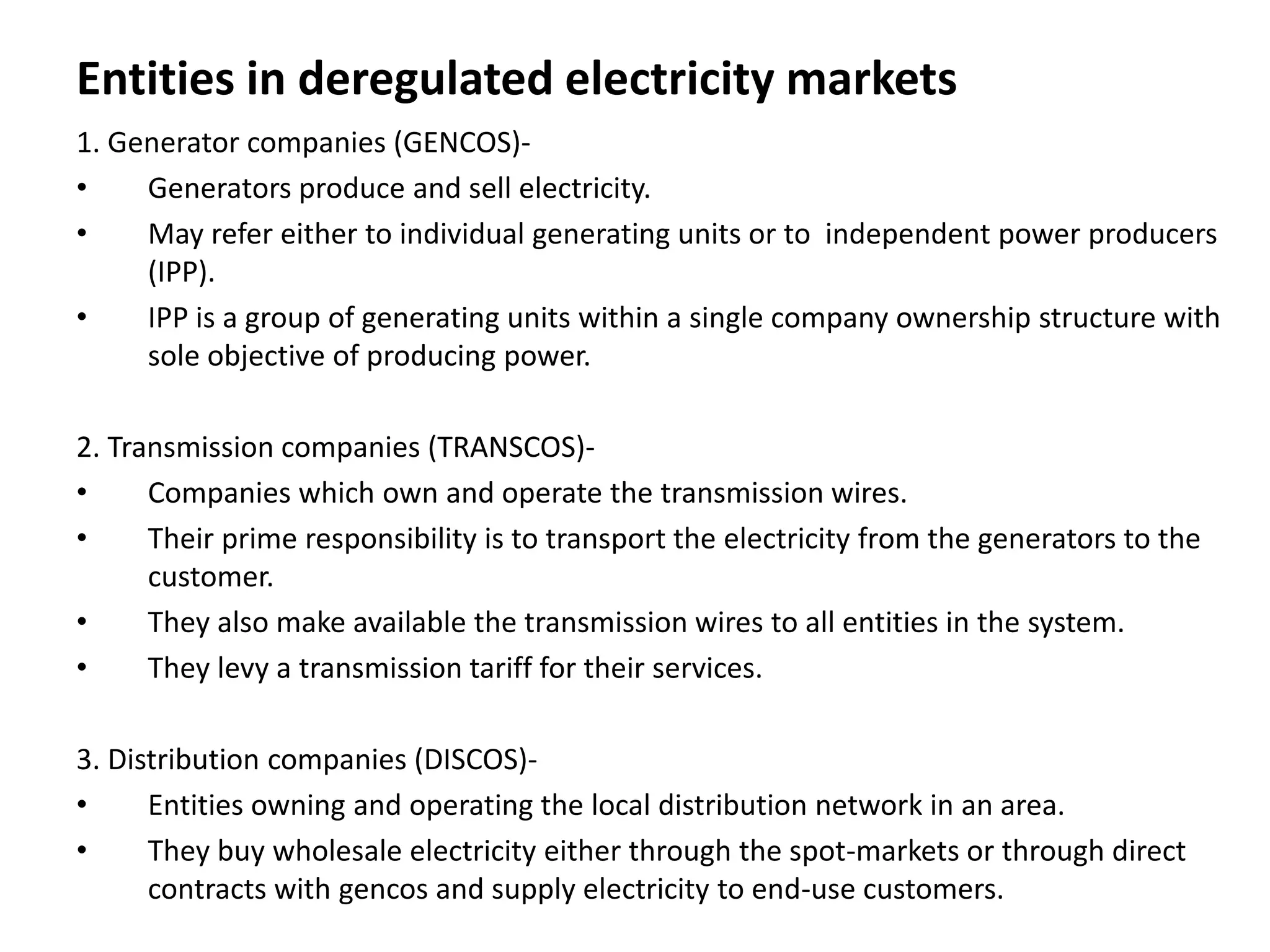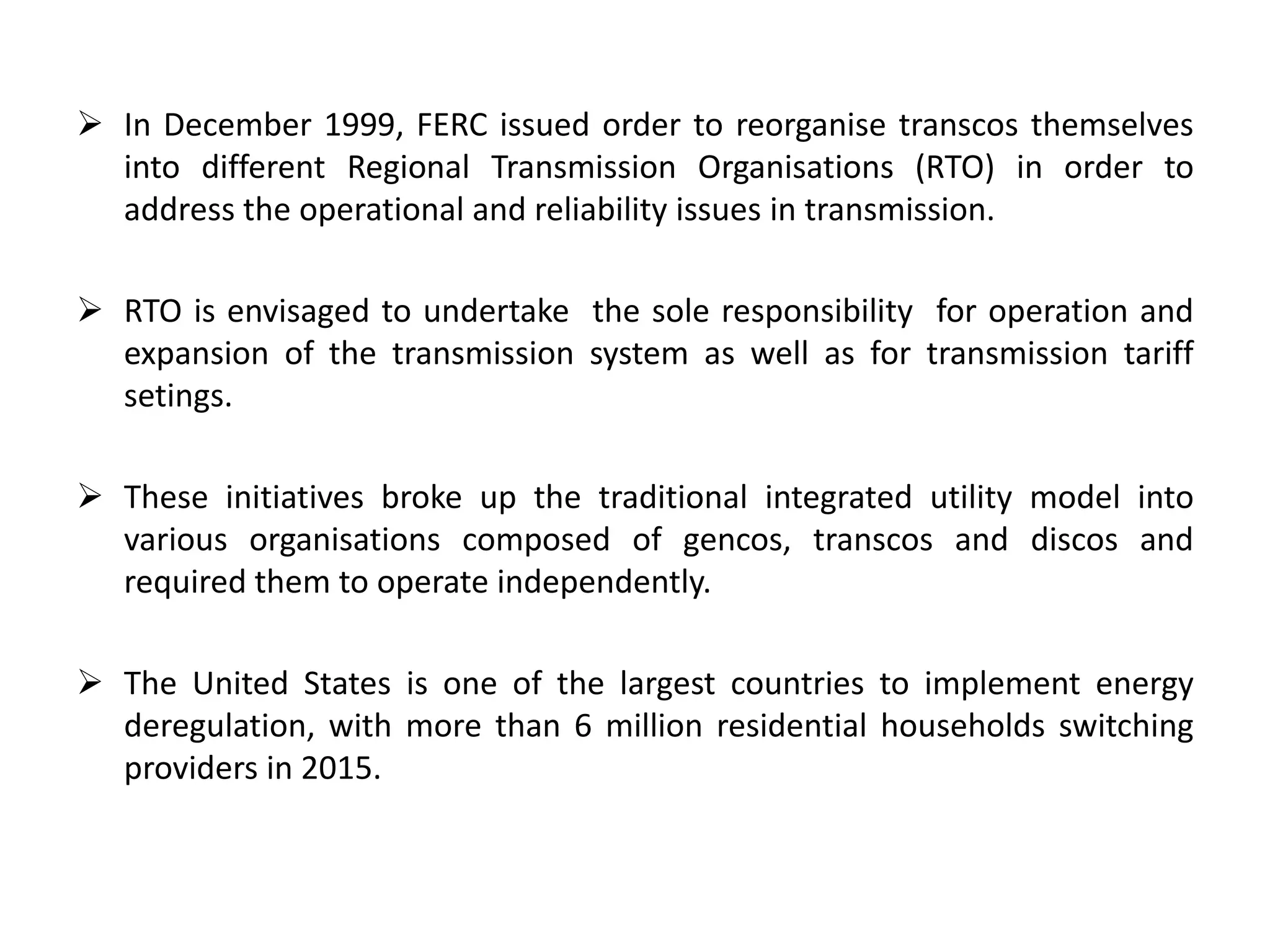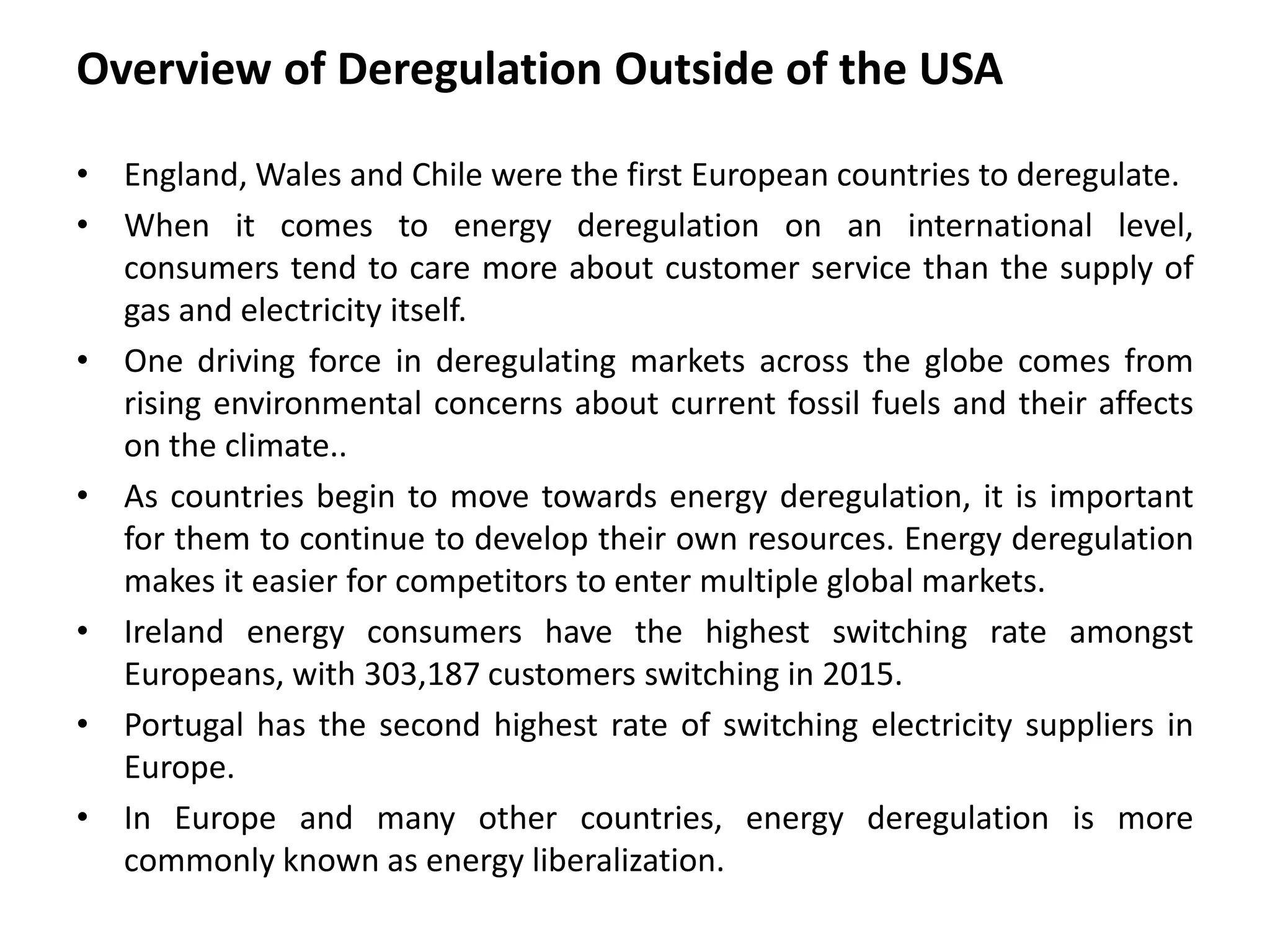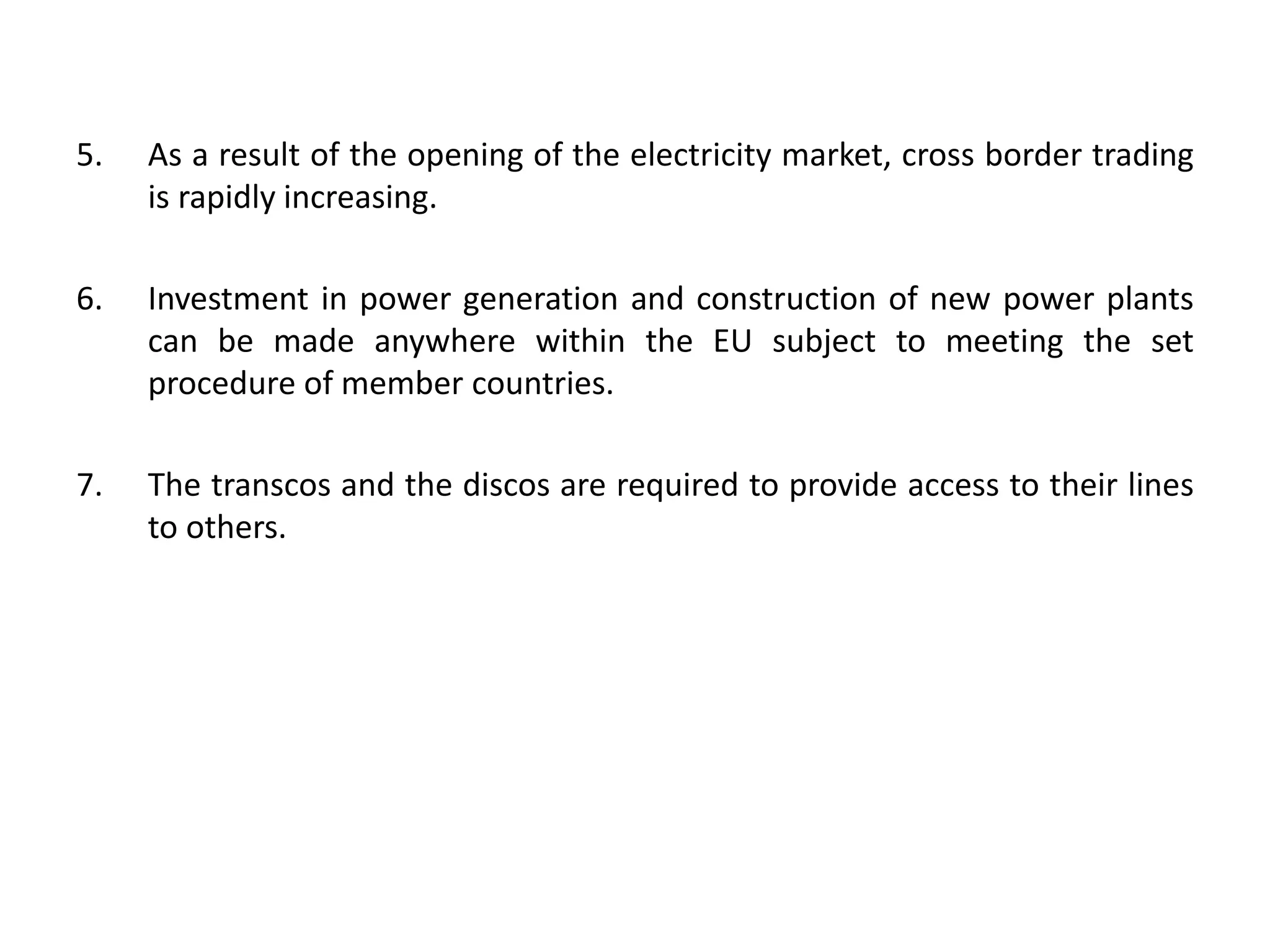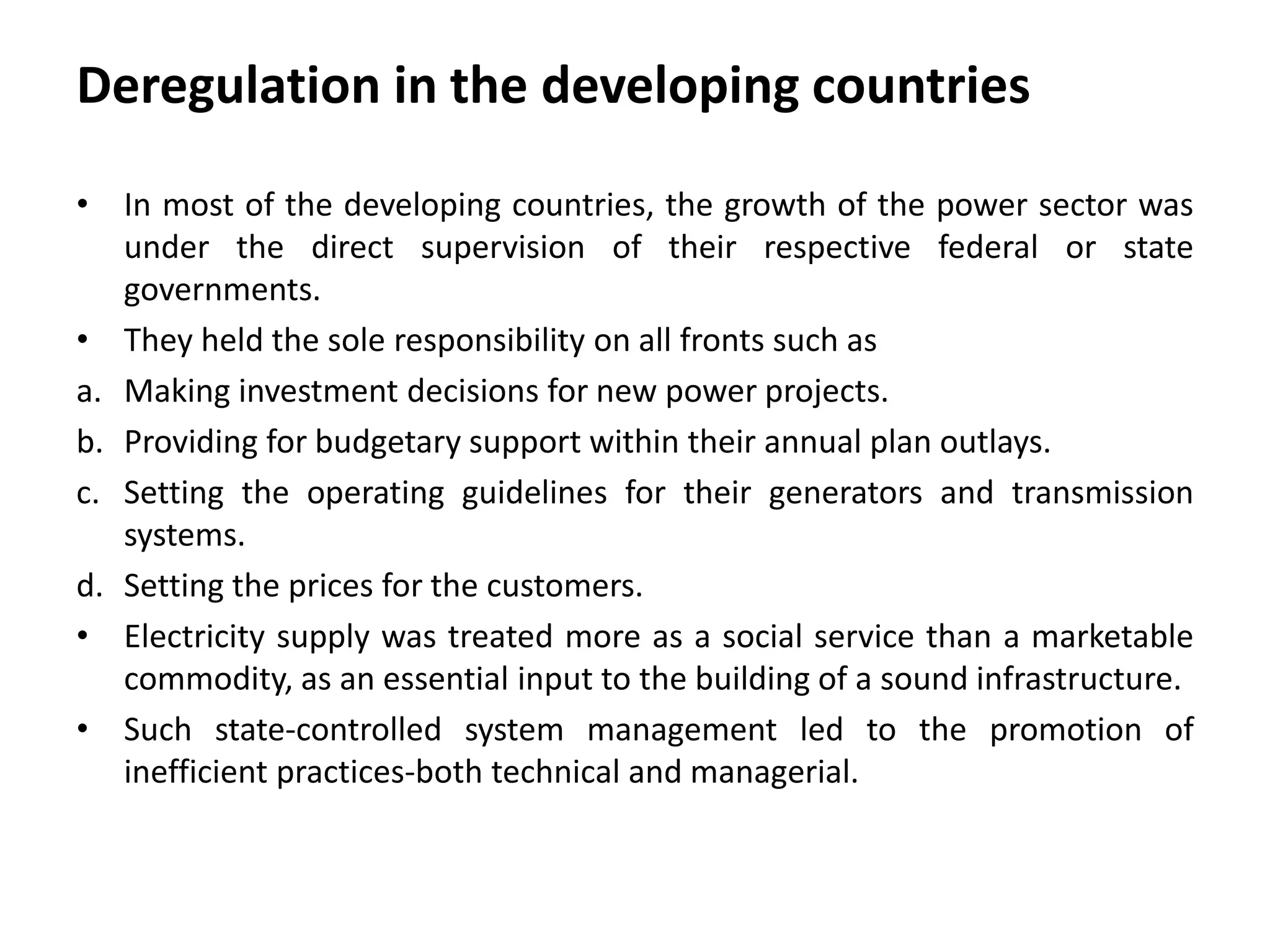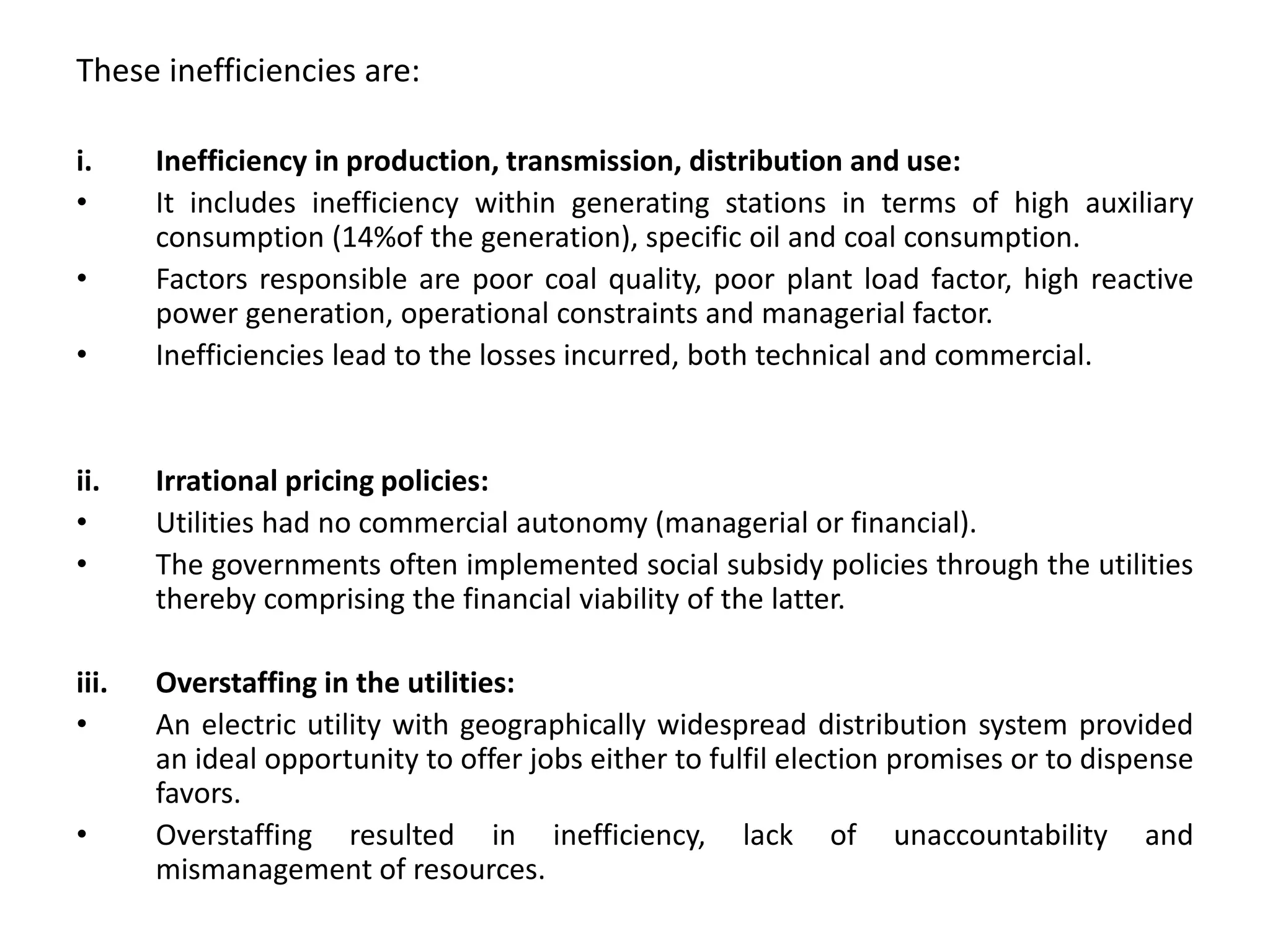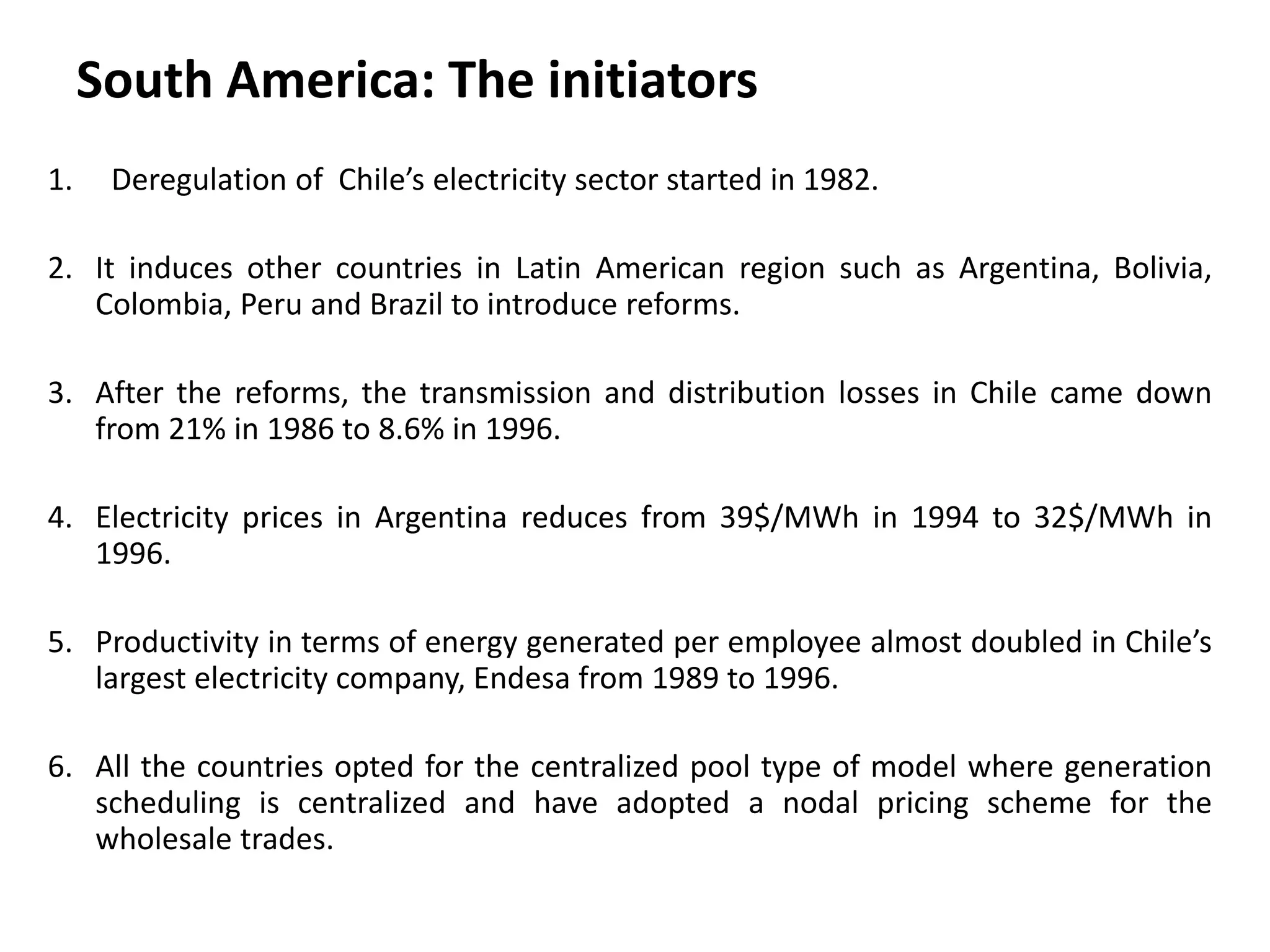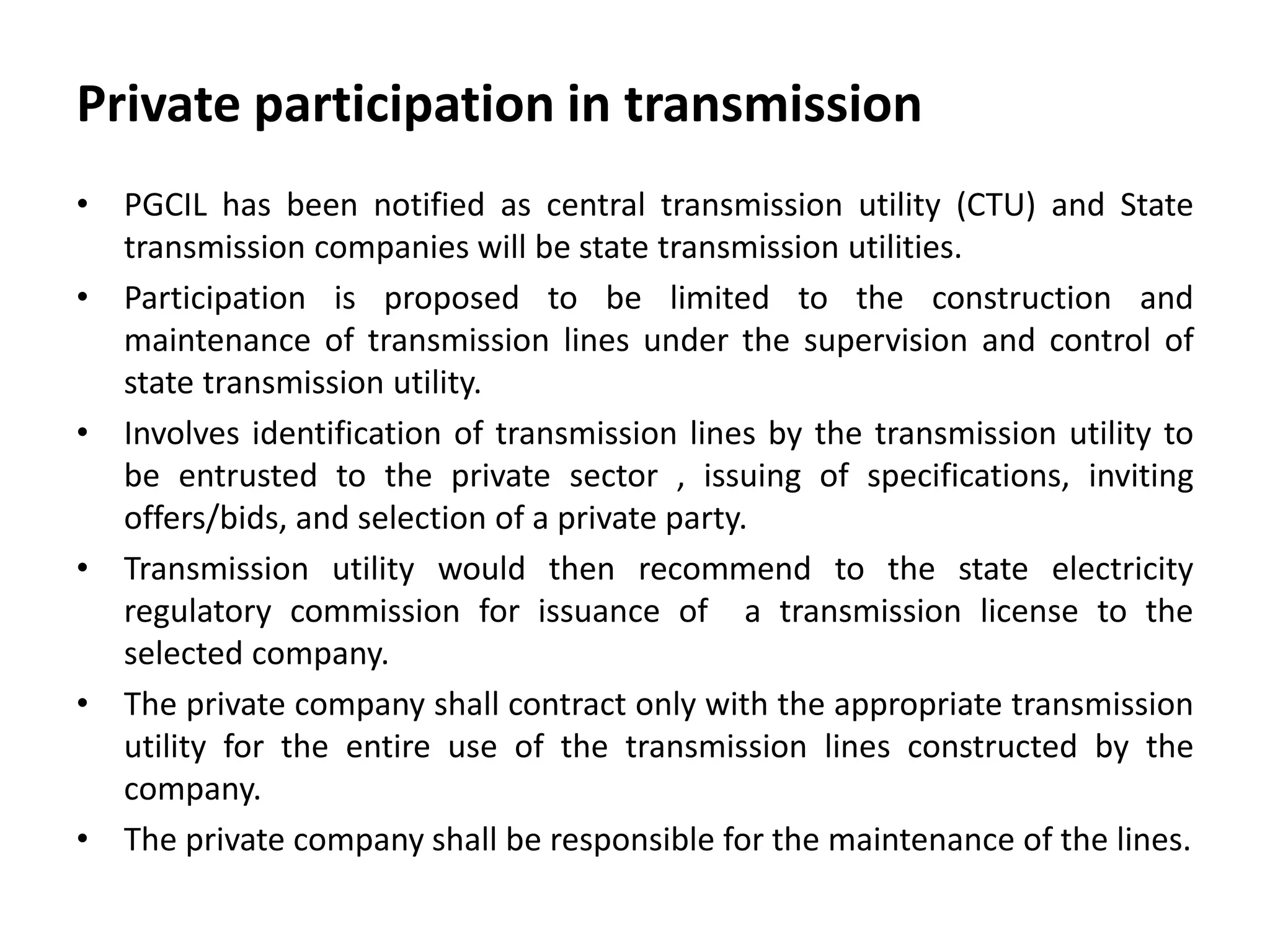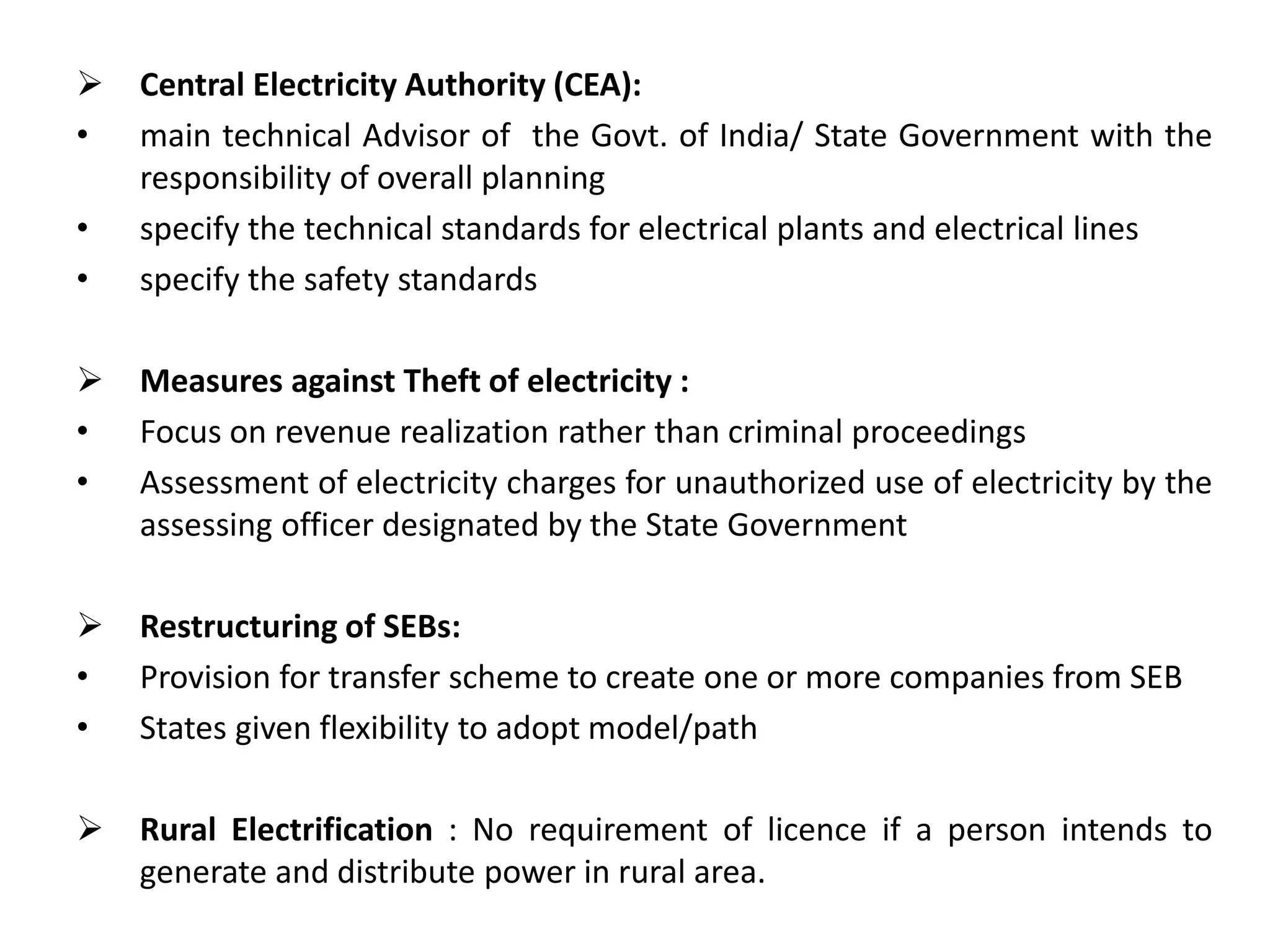The document discusses the deregulation of the electricity supply industry, highlighting the transition from a monopolistic system to one that includes various market players such as generator, transmission, and distribution companies. It details the evolution of deregulation in developed and developing countries, including the USA's Public Utilities Regulatory Policy Act and the EU's directive on the internal electricity market, which aimed to promote competition and reduce electricity prices. Additionally, it outlines the current state of electricity regulation in India, emphasizing the adoption of the Electricity Act 2003 to facilitate private investment and improve the efficiency of the power sector.


